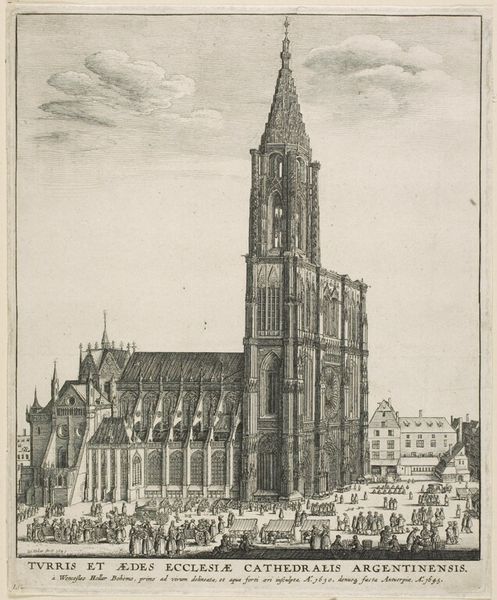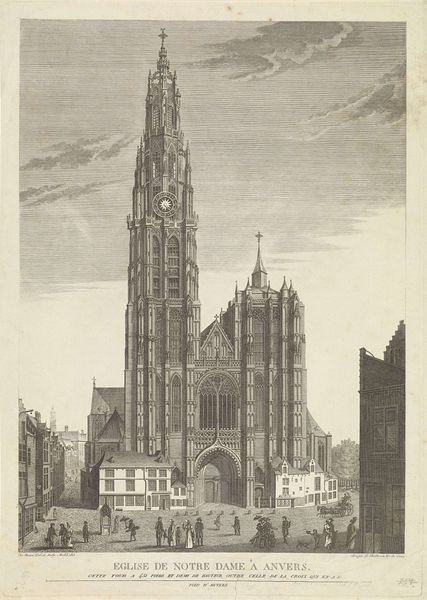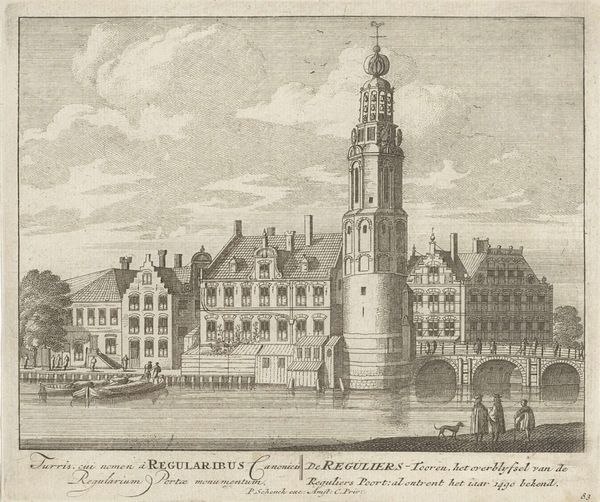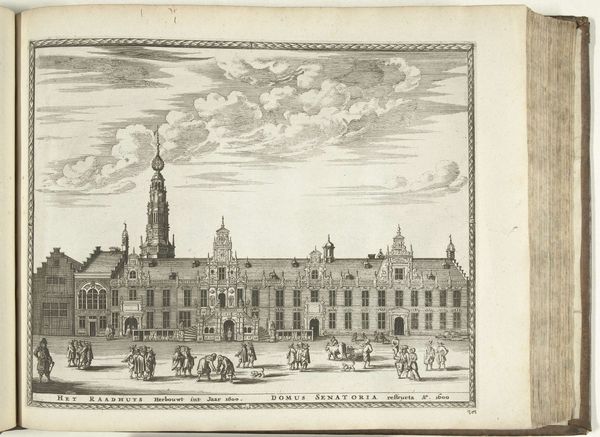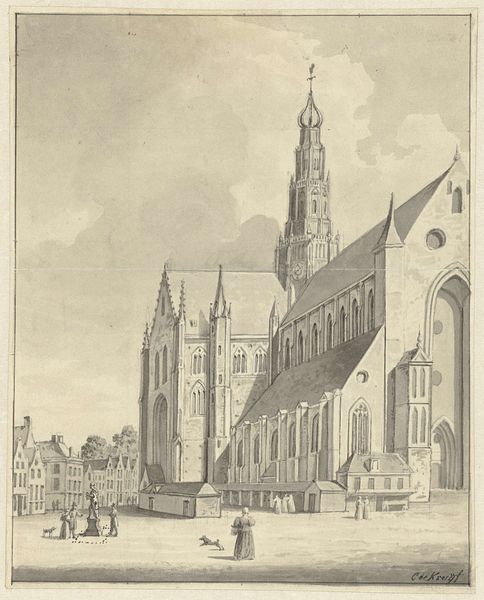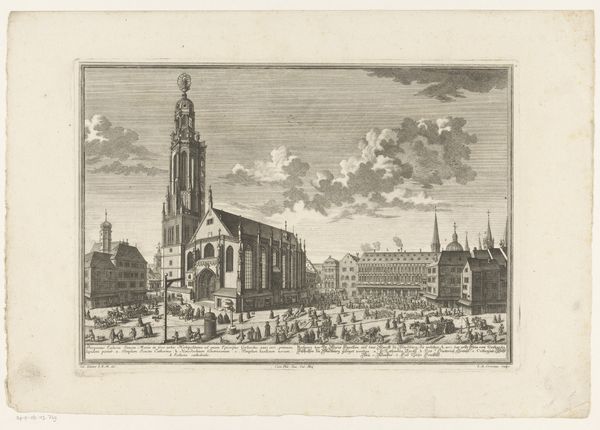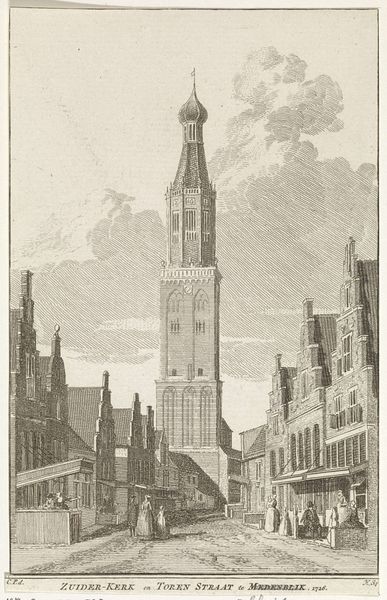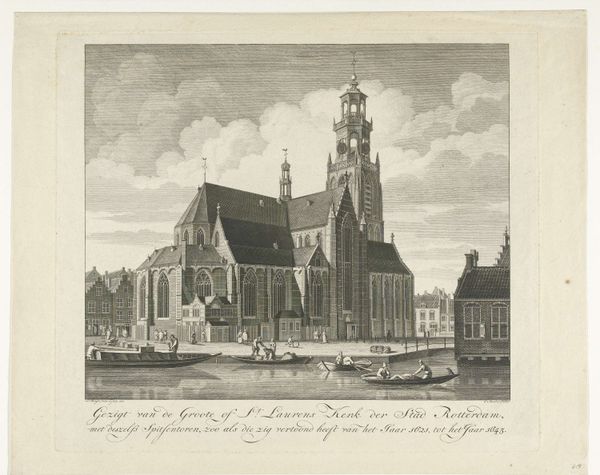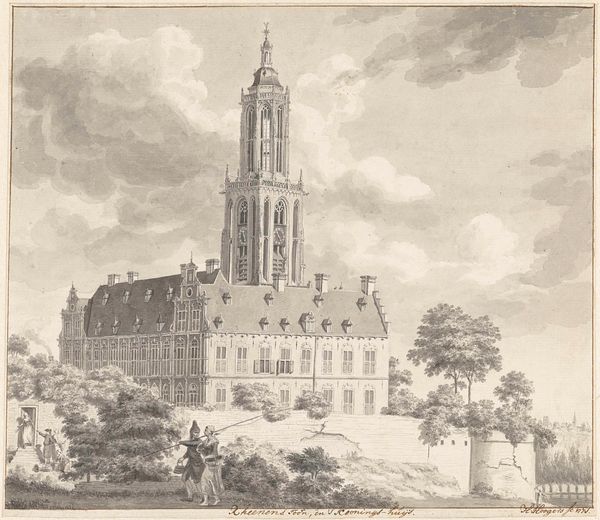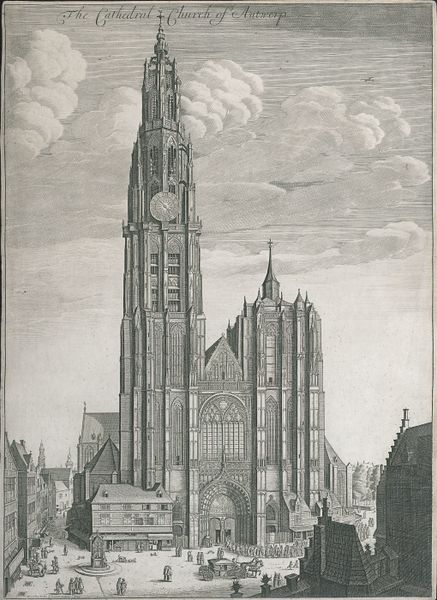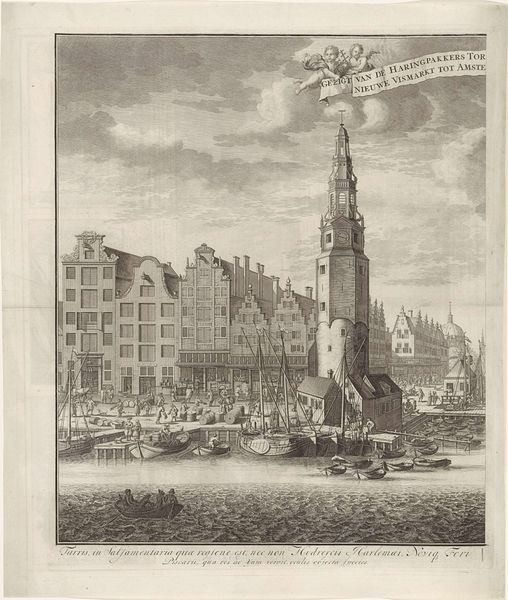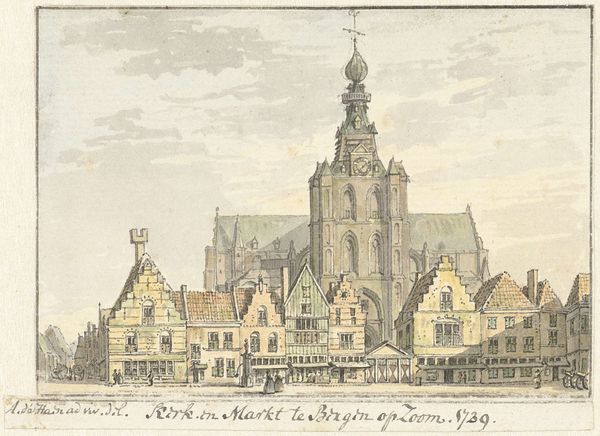
drawing, print, engraving, architecture
#
drawing
#
neoclacissism
# print
#
cityscape
#
engraving
#
architecture
#
realism
Dimensions: height 381 mm, width 249 mm
Copyright: Rijks Museum: Open Domain
Editor: This print from 1815 by Joseph Hunin, titled "Stadhuis te Brussel", showcases the Brussels Town Hall. It is a detailed engraving, a cityscape rendered in delicate lines. I’m immediately struck by the rigid symmetry. What can you tell me about the artist’s design choices? Curator: Note the meticulously balanced composition. The artist renders the facade and spire with remarkable accuracy, giving particular attention to linear perspective, drawing our eye towards a vanishing point high above the frame. This creates a pronounced vertical thrust, characteristic of neoclassical art. It exemplifies architectural rendering, in the print medium, intended for mass consumption. What do you notice about the relationships among form and the surface? Editor: I see how the details of the building are very precise, but the people and carriages seem less important, more like tiny, simple shapes used to give scale. Curator: Precisely. The emphasis remains on the architectural structure itself, presented objectively, devoid of emotional expression or social commentary, which could potentially be explored by some viewers.. This reflects the rational spirit of the Neoclassical period. What is communicated via this choice of form? Editor: I hadn’t thought about it that way before. So, the medium and the precise lines create a sense of order and present the building as something almost monumental and permanent. Thanks for clarifying. Curator: Indeed. We can deduce from the material presentation, form, line, and its visual language insights to the aesthetic values of the work itself, and Neoclassical aesthetics more broadly. Editor: Right, it’s the objective representation itself that communicates. Now I see.
Comments
No comments
Be the first to comment and join the conversation on the ultimate creative platform.
